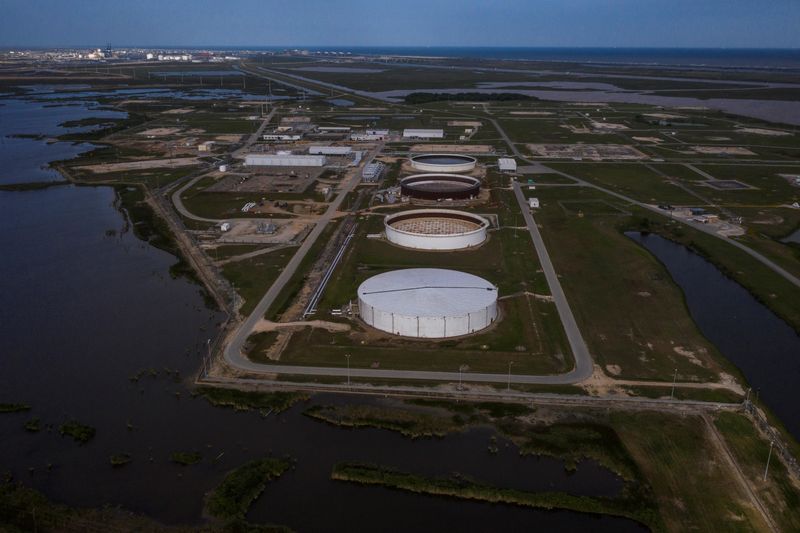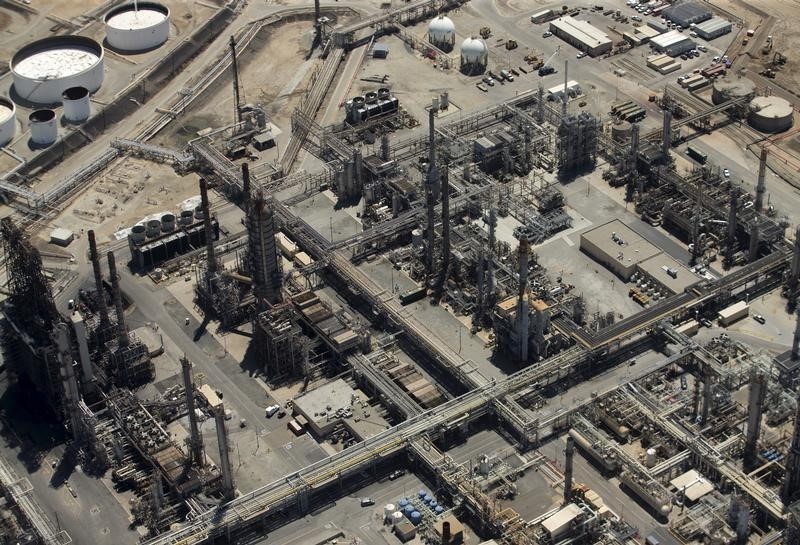By Shariq Khan
NEW YORK (Reuters) -Oil prices fell for a second straight session on Thursday after the U.S. government reported weak fuel demand in the country and a surprise jump in gasoline and distillate fuel inventories.
futures fell $1.74, or 2.1%, to settle at $81.86 a barrel. U.S. West Texas Intermediate crude futures fell $1.32, or 1.7%, to $77.91 a barrel.
Inventories fell more than expected last week as refineries reached their highest utilization rates in more than nine months, data from the U.S. Energy Information Administration showed. However, there was a surprise jump in gasoline and distillate fuel inventories as demand weakened while production rose. [EIA/S]
“Weakness in gasoline markets continues to put pressure on the rest of the oil complex,” Alex Hodes, oil analyst at brokerage StoneX, wrote Thursday.
Analysts had expected the US holiday Memorial Day on May 27, the start of the US summer driving season, to boost fuel demand. Still, the EIA’s measure of gasoline demand fell about 2% from the previous week, to 9.15 million barrels per day.
“I was mainly looking for a hit on gasoline heading into the holiday weekend, but if refiners ramp up, that’s too much to clear product inventories,” said John Kilduff, partner at Again Capital.
“Gasoline demand is still a good number, although I expected it to be closer to 9.5 (million barrels per day) over the last holiday weekend,” he said.
U.S. gasoline futures fell more than 2% to a three-month low of $2.40 a gallon, while ultra-low sulfur diesel futures settled at an eleven-month low.
Further pressure on oil prices has dampened investor risk appetite amid the prospect of delayed monetary easing in the US and Europe, analysts at financial brokerage ActivTrades said. ‘Fear trading’ is dominating financial markets ahead of Friday’s US consumer price index figures, they wrote to clients.

Oil investors are also cautious ahead of this weekend’s OPEC+ meeting. The producer group will decide whether to extend, deepen or reverse the supply restrictions.
Demand for soft fuels and rising global oil supplies could convince OPEC+ producers, including the Organization of the Petroleum Exporting Countries (OPEC) and allies including Russia, to continue supply cuts when they meet on June 2, they say OPEC+ delegates and analysts.


